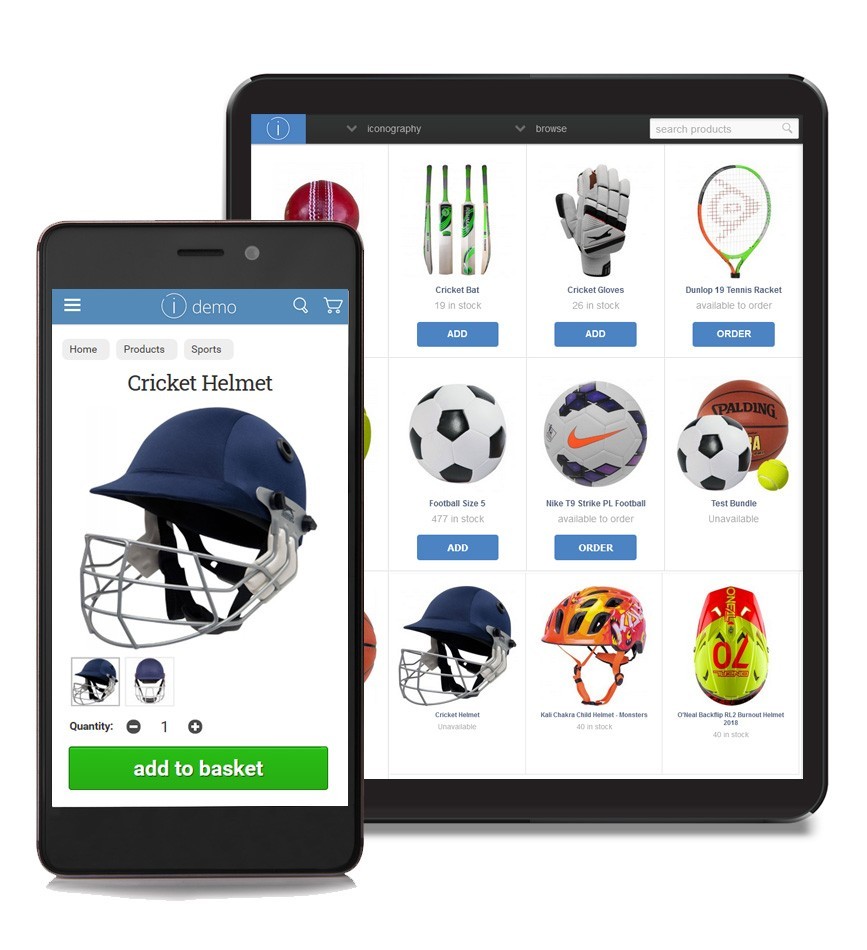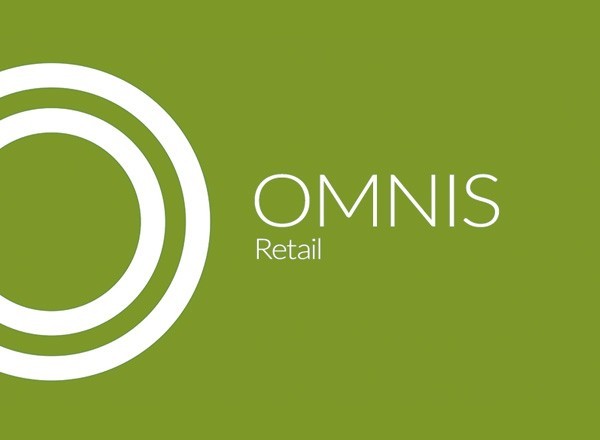How to improve multichannel inventory management
Why does it matter?
Multichannel inventory management is being prioritised by retailers as the lines between online and offline retail are being blurred by consumers. They expect products to be in stock when they want and in a location convenient to them. Retailers are being forced to adopt a new approach to inventory management and implement systems that help to meet the fast-moving demands of the modern consumer.
That means multichannel inventory management is concerned with being able to view stock in real-time across an entire retail estate. That accurate information can be used to make informed, data led decisions that lead to increased sales with good margins and improved inventory management.
RMS from Iconography
Did you know that our Unified Commerce platform mixes eCommerce, RMS, CRM and EPoS?
OMNIS Retail is an award winning platform with a single database handling customer data, stock management, purchase ordering and much more.
Drive effective multichannel inventory management
We've put together some practical tips that are already being used by top multichannel retailers to effectively manage inventory and deliver a better customer experience across every touchpoint.
1. Create a centralised view of inventory for every channel
Selling across multiple channels often means working with many different systems. Traditionally retailers might have one system for instore and another for eCommerce, each holding channel-specific stock. This can lead to inventory information being siloed in each channel.
This disjointed approach makes delivering a coherent customer journey almost impossible. A Capgemini study found that 29% of retailers lack inventory visibility across stores, vendors, and warehouses in order to accurately promise multichannel fulfilment. Because of this customers become frustrated when they can’t check stock online in their local store and when store staff can’t advise if there is stock in other locations. All in all, it leads to a negative experience for the customer and lost sales for the retailer.
Centralised inventory management helps to bridge the gap between online and offline sales channels. When systems like EPoS and eCommerce are fed from a central database, accurate stock levels are instantly visible to staff and customers alike.
This means retailers can quickly deploy store stock to online channels if store sales are not strong and the stock not turning. Regardless of channel the system is agile enabling customers to shop how they want, when they want as the retailer isn’t limited by siloed legacy systems.
2. Avoid integrations between core systems
Sometimes patchy integrations between legacy systems are hard to avoid which, when they go wrong, can be the cause of endless frustration for retailers. On the other hand, some integrations are absolutely necessary, like those that allow retailers to sell through marketplaces and connect accounting and email software.
Retailers should generally aim to avoid integrations between core marketing and sales systems - which are any systems that could disrupt the customer journey. A prime example is an integration between inventory management software and eCommerce platforms. Problems here can cause major headaches like products being sold that aren’t in stock or even popular products being shown as out of stock online.
To overcome this, retailers should look to implement software that updates all channels in real-time with no integrations. ‘Unified Commerce’ software holds inventory information in one database and is a unified CRM, EPoS, eCommerce and Retail Management that has no integrations allowing data to flow instantly and smoothly wherever it's needed.
Sometimes patchy integrations between legacy systems are hard to avoid which, when they go wrong, can be the cause of endless frustration for retailers. On the other hand, some integrations are absolutely necessary, like those that allow retailers to sell through marketplaces and connect accounting and email software.

Integration problems?
Finding the wrinkles with 'seamless' integrations? Unified Commerce may be the answer.
3. Automate purchase order creation
Raising and keeping track of purchase orders is crucial for retailers who want to maintain a tight ship when it comes to improving multichannel inventory management. Manually going through and raising purchase orders is time consuming and can lead to errors. That’s why many retailers are now adopting systems that automate the process of purchase order creation.
Retailers using Unified Commerce systems like OMNIS are automatically alerted when products in any channel have hit a low product threshold. A pre-populated purchase order can be raised at the touch of a button (and modified) saving time and reducing errors.
Omnis enables retailers to fully automate the purchase order process for stock items by creating and sending PO’s directly to the supplier. Better still when the stock is received, any sold to customers on back order (online or in-store), when received into the warehouse can be allocated to the relevant customer order, processed and despatched.
One example where this type of automation is particularly useful is in furniture retail. Often they sell bespoke products, as customer special orders, that need to be ordered from the supplier. As soon as a customer places their order, a purchase order is raised and sent saving the back office team a lot of time. This efficiency enables faster delivery times, more accurate ordering, cost-savings and better internal efficiency.
4. Be vigilant with data structure and naming conventions
There are multiple reasons why retailers have problems with data structure in their product database. Different members of staff adding products, not having a standard naming convention and a rush to add new products that are in demand can all lead to a messy database which causes real issues when it comes to reporting on stock and sales.
Having solid processes in place before data is added to the system is a good place to start. A document outlining critical information such as naming conventions will ensure that, whoever is adding the data, it will be inputted in the correct format. Beyond this, there are a few actions retailers can take to build an effective and well-structured database.
Most importantly, every product should have its own unique SKU. This is especially important if retailers run reports by SKU rather than product name. Variants should also be carefully set up so that they are consistent across product types and categories. Finally, when it comes to deliveries units are really important to define as products may come in cartons, crates or pallets.
5. Run daily reports & ring-fence stock for popular channels
Improving multichannel inventory management isn’t just about ensuring stock levels are correct and visible to relevant stakeholders. The most successful retailers constantly analyse sales and product reports so they can be agile and instantly respond to trends and increased demand.
Retailers selling online and in-store will often only produce daily or weekly sales reports to inform weekly or monthly forecasting. This approach is not quick enough and leads to missed opportunities and lost sales simply because it’s too late to make any decisions by the time the data is gathered and reviewed.
A Unified system allows retailers to access real-time reports on sales so instant decisions can be made to maximise sales. For example, a product may be selling quickly online but slowly in store. Using this information the retailer can ring-fence and make available stock in different stores to fulfil eCommerce orders even when the stock allocated to the eCommerce channel has sold out. Daily and weekly reports simply would not enable decisions like this to be made.
OMNIS Retail is a unified Retail Management System
Retailers can easily win or lose customers based on how effective their inventory management processes and systems are. Those that can’t offer a complete view of stock across their estate stand to lose out to those using Unified Commerce solutions to deliver cohesive customer experiences. Improving multichannel inventory management can be achieved by implementing new systems but fundamentally the correct processes must be in place to give any chance of success.
OMNIS was born out of the needs of a leading direct to consumer brand to support their online and instore retailing formats in the UK market. They were facing the same problems and challenges that present obstacles for any retailer.
As a progressive and forwarding thinking brand, our client wanted to remove the limitations, constraints and operational inefficiencies associated with integrating an eCommerce website with offline EPoS and legacy back office retail software.
We quickly saw the vast potential OMNIS possessed. It’s a need we’ve recognised with many other retailers and DTC brands that have similar aspirations and want to remove the restrictions of old retail technology and software.
In OMNIS you can create multiple warehouses with any number of locations, place purchase orders and complete stock transfers. We have a full range of reporting and administrative control suite. Together, these give you complete control and oversight over your stock across all channels.
Request a Demo

Online and instore retail
OMNIS Retail is a pioneering new retail solution that has been driven by D2C brands & niche retailers looking to the future. A single database eliminates any data integration issues between outdated systems, instead providing a cloud-based omnicommerce retail solution fit for the 21st century.
Combining all our data sources has helped to bring down costs, and provides increased flexibility
Henry, Tripp
Get in Touch